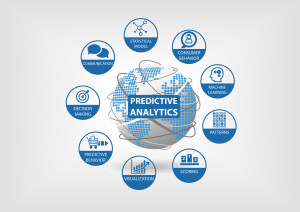Predictive Analytics: What It Is & How it Works
One of the main reasons why any organization invests in business intelligence solutions is so that they can make well-informed decisions backed by real-time data and accurate analytics. Your technology should take into account the past and present measurements that you’ve collected to give you a proper forecast for the future — and this practice is called predictive analytics.
For a more technical definition, Webopedia defines predictive analytics as “the practice of extracting information from existing data sets in order to determine patterns and predict future outcomes and trends.” In the same way a hypothesis is an educated guess, predictive analytics uses a variety of statistical techniques including data mining, modeling and machine learning to provide users with a reasonable expectation.
Its Role in Business Intelligence
There’s past, present and the future. With most business leaders having their eyes set on the future, predictive analytics serves as the perfect set of tools to plan accordingly. Key factors of a company’s infrastructure and outside factors have to be taken into account so they can make these decisions. Sales, trends, seasonal highs and lows, consumer buying behavior and more help analysts shape their projections.
It’s important to note that while this strategy can be a great aid for businesses and their choices, predictive analytics is based in possibilities, not facts. For data scientists or BI specialists, this means they can guide businesses in the right direction based on the odds of what the future may hold. The combination of a qualified and experienced BI expert with the big data collected from various sources allow companies to act with confidence in projecting the future of their performance.
Benefits of Predictive Analytics
A common example to explain the concept behind predictive analytics is homeowners and their mortgages. Mortgage lenders take into account factors like a resident’s recent payment history, credit, their buying or selling of other assets and more to plan for the next quarter of business.
These factors, likely given to decision-makers by BI analysts, allow them to devise a plan as to how they will use their capital. Perhaps more spending should be done on the promotional front, maybe the lender should disperse less money overall to prepare for foreclosures or loan defaults.
For organizations, this allows them to limit or contain the risk of the uncertainty that comes with running a business.
Software from organizations like SAP® “gives companies better insights in real time to increase understanding of customer behavior and improve response to customers and delivers tangible business value — ultimately driving profitability for organizations.”

business analytics concept on clipboard
Real Value
And that’s the major question most decision-makers will have: what’s the real value of this technology? Where’s the tangible effect that I can expect if I invest in this?
Remember, having data alone doesn’t mean anything. Many companies fail to realize that the true power in business intelligence goes beyond data collection. The power is in being able to successfully manage and store your data, being able to display it in a visually attractive manner, and more importantly, being able to use that data to make better decisions for the company’s future.
Predictive analytics is the portion of business intelligence that enables you to turn your data collection efforts into real results, if implemented correctly. For more information on how to select the right tools for your business intelligence or how to maximize the use of predictive analytics in your organization, contact one of our team members today to schedule an appointment!

